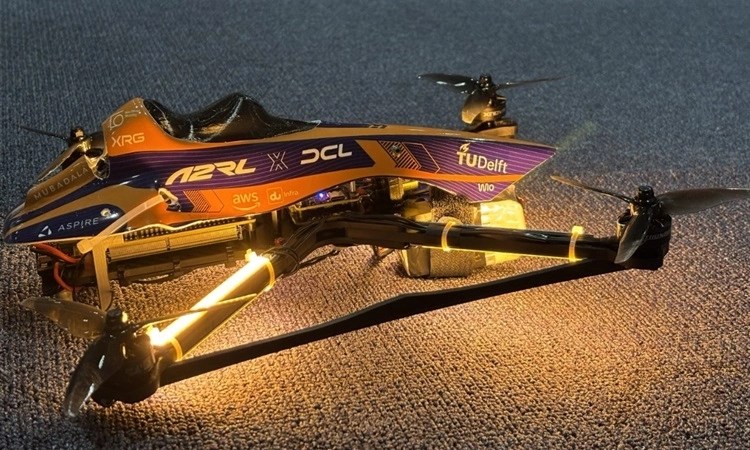On April 14, 2025, a historic milestone in technology was achieved when, for the first time, an autonomous drone powered by artificial intelligence (AI) outperformed human pilots at an international drone racing competition, according to Phys.org.
In Abu Dhabi, two drone racing events were held concurrently: the Falcon Cup Final for human pilots and the A2RL Drone Championship exclusively for autonomous drones. The highlight of the event was a direct showdown between the top AI-controlled drones and some of the world’s leading human pilots. The AI-driven drone, developed by a team of students and researchers from Delft University of Technology (TU Delft), emerged victorious against three Drone Champions League (DCL) world champions, achieving speeds of up to 95.8 km/h on a highly technical, winding course.
Significantly, unlike previous AI breakthroughs, which largely occurred in simulated environments or controlled laboratory settings, this victory was secured in real-world conditions, on hardware and race tracks fully managed by independent organizers.

Key to Success: Optimized AI Pushing Physical Boundaries
The winning drone was equipped solely with a single forward-facing camera—emulating the limited field of vision experienced by human pilots—rather than relying on a complex array of sensors as seen in previous autonomous racing competitions. This constraint required the AI system to perform spatial perception and flight control under extreme time pressure and highly constrained computational resources.
The MAVLab (Micro Air Vehicle Laboratory) team at TU Delft developed a cutting-edge AI system based on deep neural networks, enabling the drone to issue direct motor commands without passing through a traditional flight controller. This innovation stems from the “Guidance and Control Networks” originally developed by the European Space Agency (ESA) to efficiently control satellites with minimal computational overhead.
Project leader Christophe De Wagter explained:
“We trained the deep neural networks using reinforcement learning—a method of learning through trial and error. This approach allowed the drone to push closer to the physical limits of its system, achieving unprecedented levels of speed, precision, and robustness.”
Furthermore, the team redesigned not only the flight control training process but also the method of learning drone dynamics directly from onboard sensor data, rather than relying solely on simulation.
Beyond the Racetrack: Broader Implications for AI and Robotics
This historic victory signifies much more than a triumph in a single race. It opens new avenues for deploying highly efficient AI across a range of critical sectors, including:
- Emergency delivery of blood samples and defibrillators.
- Search and rescue operations in disaster scenarios.
- Enhanced performance of consumer robotics such as autonomous vacuum cleaners and self-driving vehicles.
With the ability to optimize for time, energy efficiency, and safety, such AI technologies are poised to fundamentally reshape transportation, robotics, and even aerospace engineering.
The 2025 A2RL Drone Championship has proven to be more than a competition of speed—it stands as a powerful catalyst driving the real-world evolution of high-performance, efficient artificial intelligence.
